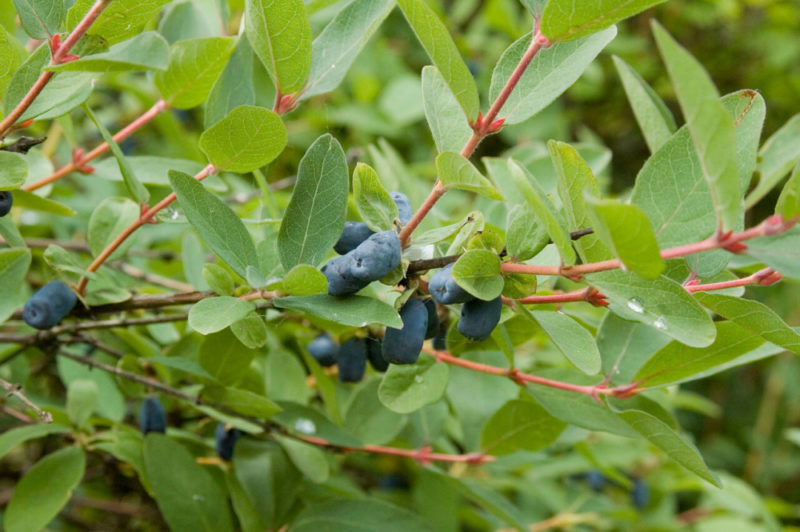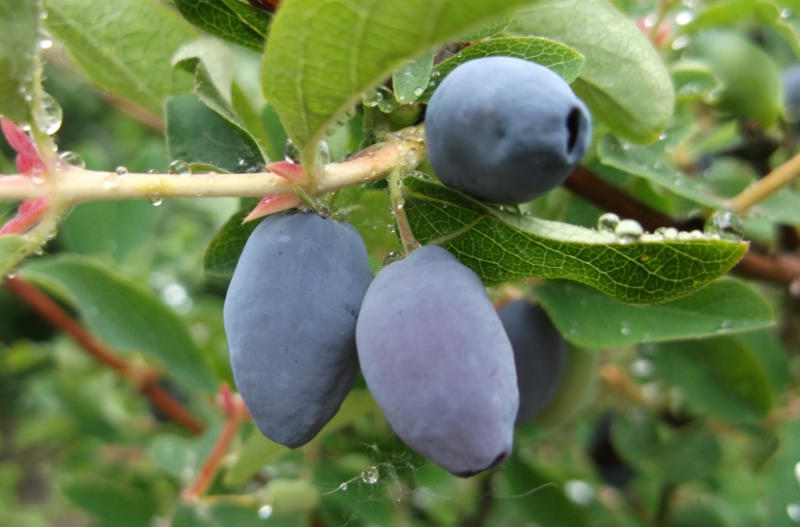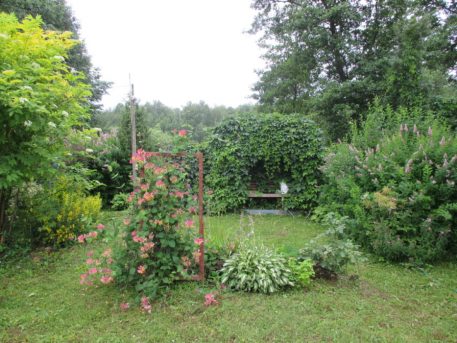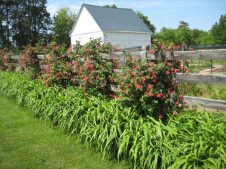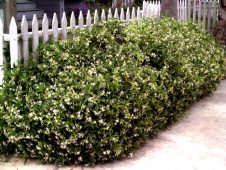Honeysuckle "Nymph" is today recognized as one of the best varieties. It is unpretentious and gives the berries excellent taste.
Material Content:
Description of honeysuckle cultivar "Nymph"
This honeysuckle was bred in 1992.
Variety Description:
- suitable for cultivation in all regions of Russia;
- has tall and slightly spreading bushes, large foliage;
- the weight of one berry reaches 1.1 g;
- the grade was given a high tasting score - 4.7 points out of 5.
In the middle lane, “Nymph” gives the first berries of excellent taste by the end of June. The variety has an average ripening period.
From one bush, you can collect, subject to all the rules of agricultural technology, up to 2 kg of berries. On average, the yield of "Nymphs" is about 1.3 kg per bush.
The variety is self-fertile and needs pollinators.
Recommended Pollinators
Any cultivar can act as a pollinator for a variety. "Morena", "Amphora" and "Blue Spindle" are great.
Of the insects, bumblebees are the best pollinators for honeysuckle. There is no need to specifically try to attract bees and bumblebees to the site, since honeysuckle is a wonderful honey plant.
Outdoor planting and care
For planting, it is advisable to purchase seedlings in nurseries. Preference is best given to plants in containers with closed roots. Seedling shoots should be flexible, without any signs of disease.
Honeysuckle planting begins with the selection of a suitable location. It is important to highlight a section of the plant that is well protected from the wind in the sun. In the shade, the plant will bear fruit very weakly.
"Nymph" will grow well on any soil, but the bush will produce more fruit on the loose soil of a slightly acid reaction, well seasoned with fertilizers.
Edible honeysuckle is a frost-resistant crop, and it is not afraid of autumn planting. In autumn, seedlings are planted in September - October. Spring planting occurs at the end of March, as soon as the snow melts. In spring, it is advisable to plant plants by transshipment.
Bushes are planted according to the standard scheme - they leave about one and a half meters between plants. The variety looks very decorative throughout the season, so they can cover less attractive plants.
Landing the honeysuckle step by step:
- The selected site two weeks before the planned planting should be dug up and selected from the ground rhizomes of weed grass.
- Then they dig a hole 40x40 cm, be sure to arrange drainage at the bottom of the hole. In this quality, you can use chipped brick or pebbles.
- A layer of fertile land mixed with humus and 50 g of superphosphate are poured over the drainage. Honeysuckle loves ash, so about 500 g are added to the planting pit.
- The seedling is lowered into a hole and covered with fertile soil, then tamped, watered abundantly and must be mulched with peat or humus.
Throughout the summer season, honeysuckle should be watered and loosened the earth around the bushes. Watered every week, spending about two buckets of water per plant. Adult shrubs can survive a short-term drought without damage, so if there is enough natural rainfall, they can be watered rarely.
After watering, the next day, weed is harvested around the plants and the soil is loosened. The roots of the honeysuckle are superficial, therefore it is impossible to loosen deeper than 8 cm. After the procedure, the circulatory circles mulch.
In the first two years, honeysuckle does not need top dressing. Then, every three years, make mineral mixtures. Early in the spring, they feed with nitrate or urea. During flowering, ash solution is applied under the bushes. In the fall they fill the earth with compost.
Diseases, pests and methods of dealing with them
To prevent the development of diseases, before flowering, in early spring, plants need to be sprayed with Bordeaux liquid. If the bush is attacked by aphids or ticks, insecticides should be used for spraying.
Chemicals are not used during fruiting.
Of the diseases, honeysuckle can infect a sooty fungus. As a result of the development of the disease, a black coating appears on the leaves, the plant quickly weakens. Control measures: double treatment with Bordeaux liquid. The interval between sprayings is weeks.
If a white coating appears on the leaves and they begin to dry quickly, then the plant was affected by powdery mildew. In this case, the shrub should be sprayed with Topsin.
Landscape design
The high decorativeness of the lush bushes of the Nymph allows it to be used in landscape design. The hedgehog from the honeysuckle, which is practically impassable, looks great. "Nymph" will serve as an excellent background for flowering plants and will look great next to a fence or lawn.
This dessert variety is very unpretentious in care, but stably gives high yields of delicious berries that can be both consumed fresh and processed. The variety is suitable for growing even in regions with harsh winters and even beginners can cope with its agricultural technology.


